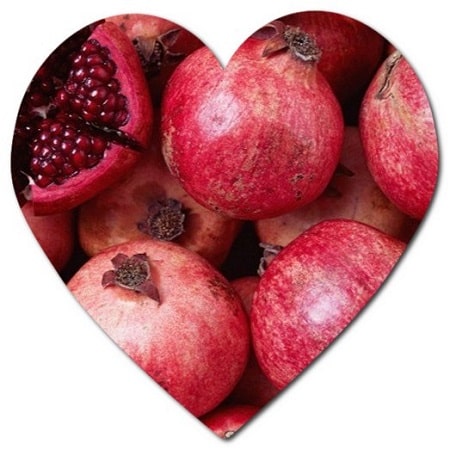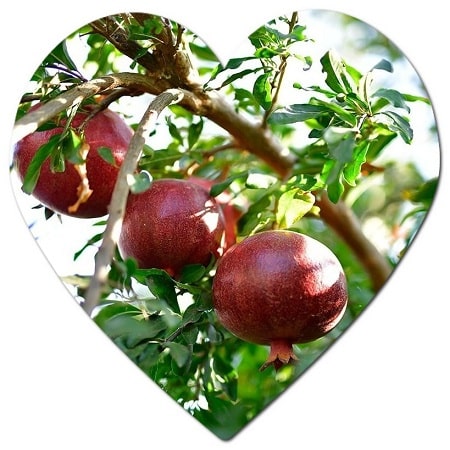Pomegranate is a very sun-loving plant. It can grow from 0 meters to 1000 meters in height, showing its tolerance to various climate types. Since the pomegranate plant blooms late, it is not damaged by spring frosts, but late ripening varieties can be damaged by late fall frosts. The pomegranate plant has a wide range of adaptability. Although it is generally a tropical and subtropical climate plant, it can withstand temperatures as low as -10 ˚C.
pomegranate trees (Punica granatum) can be grown in various parts of the United States, particularly in regions with a warm and dry climate. Pomegranate trees are well-suited to USDA Hardiness Zones 8-11, which cover a considerable portion of the southern and southwestern United States. Here are some key considerations for growing pomegranate trees in the U.S.:

- Climate: Pomegranates thrive in warm to hot climates and are well-suited to regions with long, hot summers. They are relatively drought-tolerant once established.
- Hardiness Zones: Pomegranate trees can be grown in USDA Zones 8-11. In colder regions, the trees may benefit from protection during occasional frost or freezes.
- Soil: Pomegranates prefer well-draining soil and can tolerate a range of soil types, including sandy or loamy soils. However, they do best in soil with a slightly acidic to slightly alkaline pH.
- Sunlight: Pomegranate trees require full sunlight for optimal growth and fruit production. Ensure they receive at least 6-8 hours of direct sunlight daily.
- Watering: While pomegranates are somewhat drought-tolerant, they benefit from regular watering, especially during dry periods. However, it’s important to avoid waterlogged conditions, as pomegranates are susceptible to root rot.
- Pruning: Pruning can help shape the tree, promote airflow, and encourage fruit production. Remove dead or damaged branches and shape the tree as desired.
- Fruit Production: Pomegranate trees produce distinctive red or pink fruits that contain juicy seeds (arils). The fruit is typically harvested in the fall.
- Varieties: There are several pomegranate varieties with different characteristics, including fruit size, sweetness, and cold tolerance. Some popular varieties include ‘Wonderful,’ ‘Eversweet,’ and ‘Ambrosia.’
It’s important to note that pomegranates may not thrive in areas with extremely cold winters, as they are more sensitive to frost and freezing temperatures. In colder regions, consider planting pomegranate trees in containers that can be moved indoors during winter or providing additional protection during cold spells. Before planting a pomegranate tree, it’s advisable to check with local nurseries or extension services for advice tailored to your specific region and climate.
How did pomegranates get to the US?
The introduction of pomegranates (Punica granatum) to the United States can be traced back to historical exploration and trade routes. Pomegranates are believed to have originated in the region that includes modern-day Iran and northern India. As ancient civilizations expanded and traded goods, the pomegranate made its way to different parts of the world.
The specific route of introduction to the United States is not precisely documented, but it likely occurred through various means, including:
European Exploration: European explorers and traders played a significant role in the global movement of plants and fruits. Pomegranates could have been introduced to the Americas by European explorers who brought back plant specimens and seeds from their travels.

Colonial Period: During the colonial period, settlers and colonists were involved in the exchange of plants and agricultural products between the Old World (Europe, Asia, and Africa) and the New World (the Americas). Pomegranates could have been introduced to the American colonies through this exchange.
Trade Networks: The establishment of trade networks facilitated the movement of goods, including plants and seeds, across continents. Pomegranate seeds could have been carried by traders and travelers who were involved in transatlantic trade.
Cultural and Culinary Influences: As immigrants from various regions settled in the United States, they brought with them their culinary traditions and preferences. Pomegranates, with their cultural and historical significance, might have been introduced and cultivated based on the culinary preferences of different communities.
It’s important to note that the introduction of plants to new regions often involves a combination of human activities, trade, and natural dispersion. Pomegranates have adapted well to certain climates in the United States, particularly in regions with warm and dry conditions. Today, pomegranates are grown in various states, especially in the southern and southwestern parts of the country, where the climate is suitable for their cultivation.
In which states in America does the Pomegranate tree grow well?
Pomegranate trees (Punica granatum) thrive in warm and arid to semi-arid climates. They are well-suited for regions with hot summers and mild winters. In the United States, pomegranate trees grow well in specific states, particularly those with climates conducive to their cultivation. Here are some states where pomegranate trees can grow well:
- California: Pomegranates are extensively cultivated in California, especially in the southern and central parts of the state. California’s warm and dry climate, particularly in areas with Mediterranean climates, is ideal for pomegranate cultivation.
- Arizona: Pomegranate trees do well in the hot and arid climate of Arizona. They are grown in various regions of the state, and Arizona has become known for its pomegranate orchards.
- Texas: Certain parts of Texas, especially in the southern and central regions, provide suitable conditions for pomegranate cultivation. The warm climate is conducive to successful fruit production.
- New Mexico: In the southern and central regions of New Mexico, where the climate is warm and dry, pomegranate trees can be cultivated successfully.
- Nevada: Pomegranates can be grown in parts of Nevada with warmer temperatures and well-draining soil. The tree’s tolerance for arid conditions makes it suitable for certain areas in the state.
It’s important to note that while pomegranate trees can be grown in these states, the success of cultivation may still depend on factors such as local microclimates, soil conditions, and protection from frost. Pomegranates are generally better suited to USDA Hardiness Zones 8-11, where winters are mild.

If you are considering growing pomegranate trees, it’s advisable to check with local nurseries, agricultural extension services, or horticultural experts in your specific region for guidance on the best varieties and cultivation practices tailored to your local conditions. Additionally, the use of mulch and protection measures during occasional cold spells can contribute to successful pomegranate cultivation in borderline climates. Pomegranate tree in the United States >>
How to care for a Pomegranate tree in America?
Caring for a pomegranate tree (Punica granatum) in America involves providing the right conditions for growth, protecting the tree from potential challenges, and following good horticultural practices. Here are some general guidelines for caring for a pomegranate tree in the United States:
1. Climate and Location:
- Choose the Right Location: Plant the pomegranate tree in a location with full sunlight. Pomegranate trees thrive in warm climates, and they do well in USDA Hardiness Zones 8-11.
2. Soil:
- Well-Draining Soil: Pomegranate trees prefer well-draining soil. Sandy or loamy soils are suitable, and the soil should have a slightly acidic to slightly alkaline pH.
3. Watering:
- Regular Watering: While pomegranate trees are somewhat drought-tolerant, they benefit from regular watering, especially during dry periods. However, avoid waterlogged conditions, as pomegranates are susceptible to root rot.
4. Fertilization:
- Balanced Fertilizer: Apply a balanced fertilizer in the spring to support growth. Follow the recommended rates on the fertilizer package.
5. Pruning:
- Dormant Season Pruning: Prune the tree during the dormant season (late winter or early spring) to remove dead or diseased wood and shape the tree. Pomegranates can be grown as shrubs or small trees, depending on pruning preferences.
6. Mulching:
- Mulch Around the Base: Apply a layer of organic mulch, such as wood chips or bark, around the base of the tree to conserve soil moisture and suppress weeds. Keep the mulch a few inches away from the trunk to prevent rot.
7. Protection from Frost:
- Cold Tolerance: While pomegranates are relatively cold-tolerant, young trees may benefit from protection during occasional frost or freezes. Consider using frost cloth or other protective measures.
8. Pest and Disease Control:
- Monitor for Pests: Keep an eye out for common pests such as aphids and scale. Treat infestations promptly with insecticidal soap or neem oil.
- Disease Management: Pomegranate trees are generally resistant to diseases, but proper sanitation and good cultural practices can help prevent issues.
9. Harvesting:
- Timing: Harvest pomegranates when they are fully ripe. The fruit should be deep in color and have a slightly soft feel. Cut the fruit from the tree rather than pulling to avoid damaging the branches.
10. Cultivar Selection:
- Choose Appropriate Varieties: Consider selecting pomegranate varieties that are well-suited to your specific region and climate.
11. Drought Tolerance:
- Establish Drought Tolerance: Once established, pomegranate trees are somewhat drought-tolerant. However, consistent watering, especially during dry spells, is beneficial for optimal fruit production.
12. Disease Resistance:
- Select Disease-Resistant Varieties: Some varieties are more resistant to certain diseases, so consider this when selecting a cultivar.
13. Regular Monitoring:
- Monitor Growth: Regularly check the overall health of the tree, watch for signs of stress, and address any issues promptly.
Remember that specific care requirements may vary based on the local climate and soil conditions. It’s advisable to consult with local nurseries, extension services, or horticultural experts for advice tailored to your specific region. Does a Pomegranate tree grow well in America? >>
